Exercises for Proximal Hamstring Tendinopathy
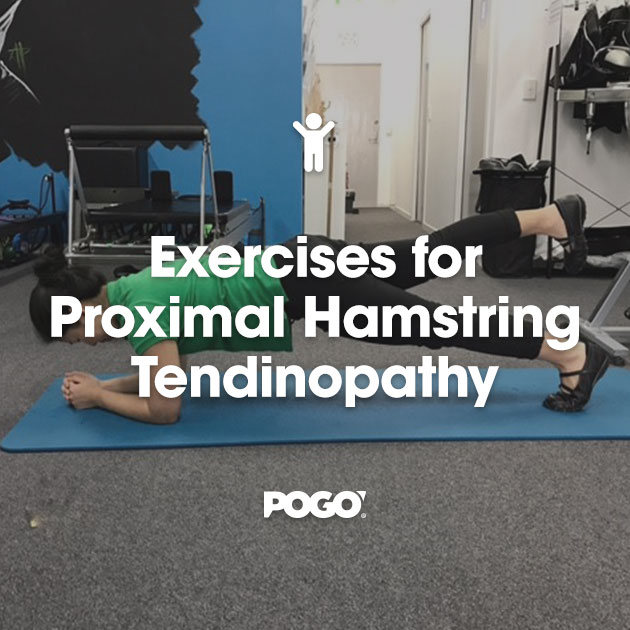
Do you experience pain in the back of your leg or into your buttock? Feel uncomfortable when you walk, bend forwards, sit, sprint or run uphill? You may have what is called proximal hamstring tendinopathy.
Proximal hamstring tendinopathy is characterised by thigh or buttock pain localised to the hamstring attachment at the origin, which is called the ischial tuberosity. It is most commonly aggravated by activities that involve compressive loads on the hamstring tendon for example when the hamstring is working with the hip flexed, long periods of sitting or driving, deep lunges, overstretching of the hamstrings and running at faster speeds and uphill. Although it is usually compressive loads, which lead to proximal hamstring tendinopathy, it does not necessarily need to be energy storage loads. Your pain may be due to increased load such as an increase in hill running, deeper lunges, deadlifts or stretches in yoga.
Proximal hamstring tendinopathy is characterised by thigh or buttock pain localised to the hamstring. #performbetter @pogophysio Share on X It is often described as a dull, aching soreness high up onto your hamstring and deep into the buttock. Pain is most regularly felt in the morning or initially when running and then “warms up” and disappears as they continue to run. Sitting on hard surfaces is another common source of pain as pressure is going directly through the ischial tuberosity. Pain is often delayed and felt 24-48 hours after exercise.
It is often described as a dull, aching soreness high up onto your hamstring and deep into the buttock. Pain is most regularly felt in the morning or initially when running and then “warms up” and disappears as they continue to run. Sitting on hard surfaces is another common source of pain as pressure is going directly through the ischial tuberosity. Pain is often delayed and felt 24-48 hours after exercise.
There are many hamstring-related injuries that can occur in athletes so having an accurate diagnosis is crucial to prevent delayed return to sport, injury reoccurrence and can affect clinical decisions on the best treatment options. So the first step to see if you do indeed have proximal hamstring tendinopathy is to get an accurate diagnosis by visiting a physiotherapist who will take a detailed subjective history followed by a thorough clinical examination. Diagnostic imaging may be requested to confirm the diagnosis or rule out any other causes of referred posterior thigh pain. Once you have a proper diagnosis of your hamstring pain, appropriate treatment and exercises can be made to ensure a quick, yet safe return to your desired sport.
Exercise is the most evidence based treatment for hamstring tendinopathy. Due to the nature of tendinopathies, loads must be managed in a way you do not overload your tendons causing more irritation or inflammation. Tendons should be loaded progressively so that they can develop better tolerance to the loads that are necessary for your individual day to day needs. Exercises need to be monitored and eased into with the guidance of your physiotherapist.
Exercise is the most evidence based treatment for hamstring tendinopathy. #performbetter @pogophysio Share on XActive management through a home exercise program will usually be the main focus of your treatment. Early management of proximal hamstring tendinopathy will include load modification to avoid aggravating factors, and the introduction of isometric exercises that improve your pain. The following isometric exercises can be performed 2-3x/day, 3-4 reps, held for 30 seconds, progressing to 5 reps held for 45 seconds, but talk to your physiotherapist to see what is right for you.
Double leg isometric glute bridge

Double leg glute bridge with leg lifts
Plank with leg lifts
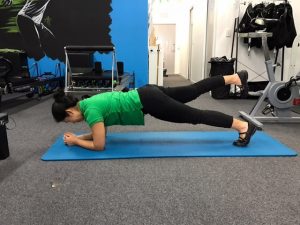
Once you are comfortable and able to tolerate repetitions and isometric holds, you can incorporate isotonic exercises such as the following:
Single Leg bridge
Prone Hamstring curl
Supine hamstring curl with ball
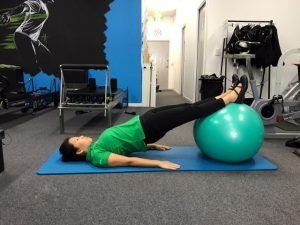
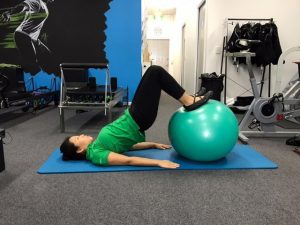
These are a few exercises to rehabilitate and build strength through your hamstrings. Exercises need to be added gradually and strength needs to be maintained to prevent symptoms from returning. It is important to be guided by your physiotherapist for recommendations of repetitions and sets according to your requirements as everyone will respond differently to certain exercises.
Exercises need to be added gradually and strength needs to be maintained to prevent symptoms from returning. #performbetter @pogophysio Share on XFor further help please refer to the below resource
- Listen to tendon expert physiotherapist and researcher Associate Professor Dr Peter Malliaras discuss the rehabilitation of tendon injuries on Episode 62 of The Physical Performance Show podcast HERE>>
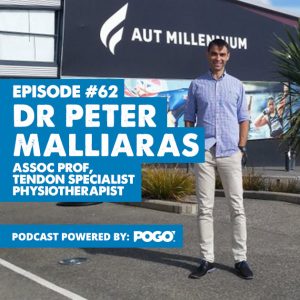
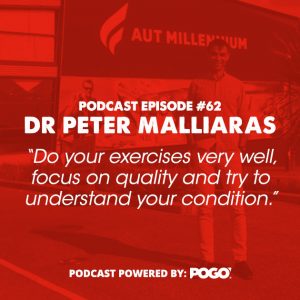
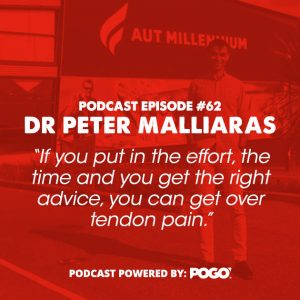
Have fun with your exercises!
Natasha Chan (APAM)
Physiotherapist

References:
Clinical Edge. (2016). Proximal Hamstring Tendinopathy with Tom Goom. 046. 4 May 2016. Available from https://www.clinicaledge.co/podcast/physio-edge-podcast/physio-edge-046-proximal-hamstring-tendinopathy-with-tom-goom. [Accessed 14 September 2016].
Cook J, Purdam C: Is compressive load a factor in the development of tendinopathy? British Journal of Sports Medicine. 2012, 46:163-168.
Fredericson, M.; Moore, W.; Guillet, M.; Beaulieu, C., High hamstring tendinopathy in runners: Meeting the challanges of diagnosis, treatment, and rehabilitation. Physician and Sportsmedicine 2005, 33 (5), 32-43.
John Davis. 2016. Runners Connect Available at: https://runnersconnect.net/running-injury-prevention/high-hamstring-tendinopathy-injuries-a-pain-in-the-butt/. [Accessed 26 September 2016].




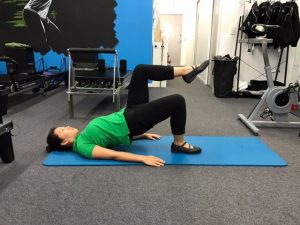
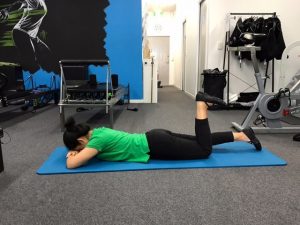




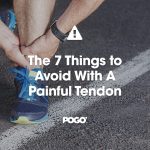
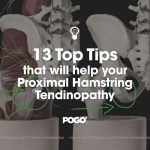
Hi is it ok to swim whilst rehabbing proximal hamstring and gluteal tendonpathiny
Yes Jane-it certainly is.
Hope you are progressing with your rehabilitation.
Regards Brad Beer
I have been struggling with high hamstring tendonitis for about 2.5 yrs I have trouble finding a doctor to diagnose and treat this so am trying it on my own. What is a good resting position? I work in construction and also play golf and I e ho key.
Hi Leonard,
Unfortunately persistent proximal hamstring tendinopathy can linger.
I’d be interested in knowing if you have commenced and progressed through prone hamstring curl work at all?
There are known benchmarks that need to be hit for strength of the hamstrings (and rest of kinetic chain) .
Take a listen to this podcast which may be helpful for you HERE>>
Try sitting on a cushion/ avoiding prolonged sitting-not always easy but can help at times.
If you get stuck we can jump on a Telehealth consult
Regards Brad Beer
Hi
Problem: MODERATE TENDINOSIS OF THE HAMSTRING ORIGIN & FOCAL CHRONIC MUSCLE STRAIN OF THE MID GLUTEUS MAXIMUS MUSCLE
I am getting on in years but like to keep fit with a variety of activities. What kind of aerobic exercise is recommended, since I am not a swimmer? Rowing machine? biking? fast walking? Elliptical?
I assume basic yoga is not recommended? (Lunges, warrior poses, etc etc)
What should I avoid in weight training? Is TRX good? Are exercises like lunges good IF they are gentle & without weights or should one avoid them altogether?
Any suggestions appreciated so that I don’t slack off! It might be a while before I can get a PT referral. The “pain delay” is a problem in assessing when an exercise may exacerbate the condition…
Thanks
Margaret
Hi Margaret,
If you are experiencing tendinopathies/tendon pathologies (eg gluteal, proximal hamstring) stretching can often aggravate the region-so yoga may be provocative.
The key is to progressively load the muscle attached to tendon-resistance training in the gym is key for this eg cable abductions for gluteal tendon, prone hamstring curls for proximal hamstring.
Tendon rehab can successfully be conducted online via Telehealth appointments-if you get stuck let me know -regards Brad Beer
b.beer@pogophysio.com.au
Hi. Why do some PTs recommend eccentric work only (swiss ball curls) others have patients do concentric and eccentric part of the exercise? Thanks.
Hi Kamil,
I advocate the need for eccentric and concentric work for tendinopathy rehabilitation. The key is progressive load with both movement directions.
Regards Brad Beer
Hi Brad, I came across your Tendonopathy blogs whilst doing my own research and have to say they are the most comprehensive I’ve come across, full of great advice! I’ve been suffering with lower hamstring tendonopathy for 6months now, where the tendon attaches to the fibula head and haven’t been making much progress to solve the injury. It’s hard finding as much information on this condition as there is for proximal hamstring tendonopathy. Would a similar rehab programme of exercises as the ones described here work for the lower hamstring?
Hi Daniel,
In most instances yes- similar approach/ rehab exercise approach is utilised for proximal and distal hamstring tendinopathies.
If you get stuck let me know – this could be furthered quite easily with a Telehealth consult.
In the meantime this Expert Edition of the podcast may be helpful HERE>>
Regards Brad Beer
Terrific information! Thank you. I will begin some of these exercises while I await my very long awaited appointments! I’ve had a difficult time convincing the medical community to actually read my MRIs which indicate that, yes, I actually DO have tendon tears and it is not just hip pain. I really appreciate you sharing this information.
Hi Chris- I hope you get traction in the required direction. Tendon rehabilitation should not be difficult-it can, and typically does take time. You may also enjoy this Expert Edition of The Physical Performance Show HERE>>
Regards Brad Beer
Hi. There is another blog post that I cannot seem to find again that outlined a few hip stabilizer exercises. One is external rotators off the side of the bed and fire hydrants. I am looking for the post and cannot find it with the outlined exercises. I have been struggling with proximal hamstring tendonopahty for months and am doing the hamstring curls, really all the other exercises to no avail. Lots of glutei work but I am interested in your focus on the external/internal rotators. Is there a way you can send me that post? Thank you!
Adrienne
Hi Adrienne,
Sorry to hear about your struggles with PHT. These are definitely very frustrating injuries that take i) time and patience ii) progressive overload and iii) consistency adherence to the program. Ensure that you’re doing enough hip and knee dominant hamstring exercises, and work the kinetic chain e.g. glutes and calves. Here are some links to the hip rotator exercises. Hope this helps with your rehab.
https://www.pogophysio.com.au/blog/running-strength-exercises/
https://www.pogophysio.com.au/blog/hip-external-rotations/
https://www.pogophysio.com.au/blog/hip-external-rotation-progression-hip-stability/
https://www.pogophysio.com.au/blog/core-stability-and-hip-stability-exercise-fire-hydrant/
Kind regards,
Julian